With our spaces closed, we continue our online tour of the current exhibition, Marino Marini: Arcadian Nudes.
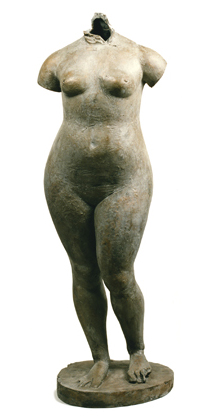
Pomona, 1941:
This life-size sculpture constitutes a ‘point of arrival’ for Marini’s research before the fracture in his artistic production, caused by the war experience and his self-exile in Switzerland. This bronze, once again, has a very belabored surface, but
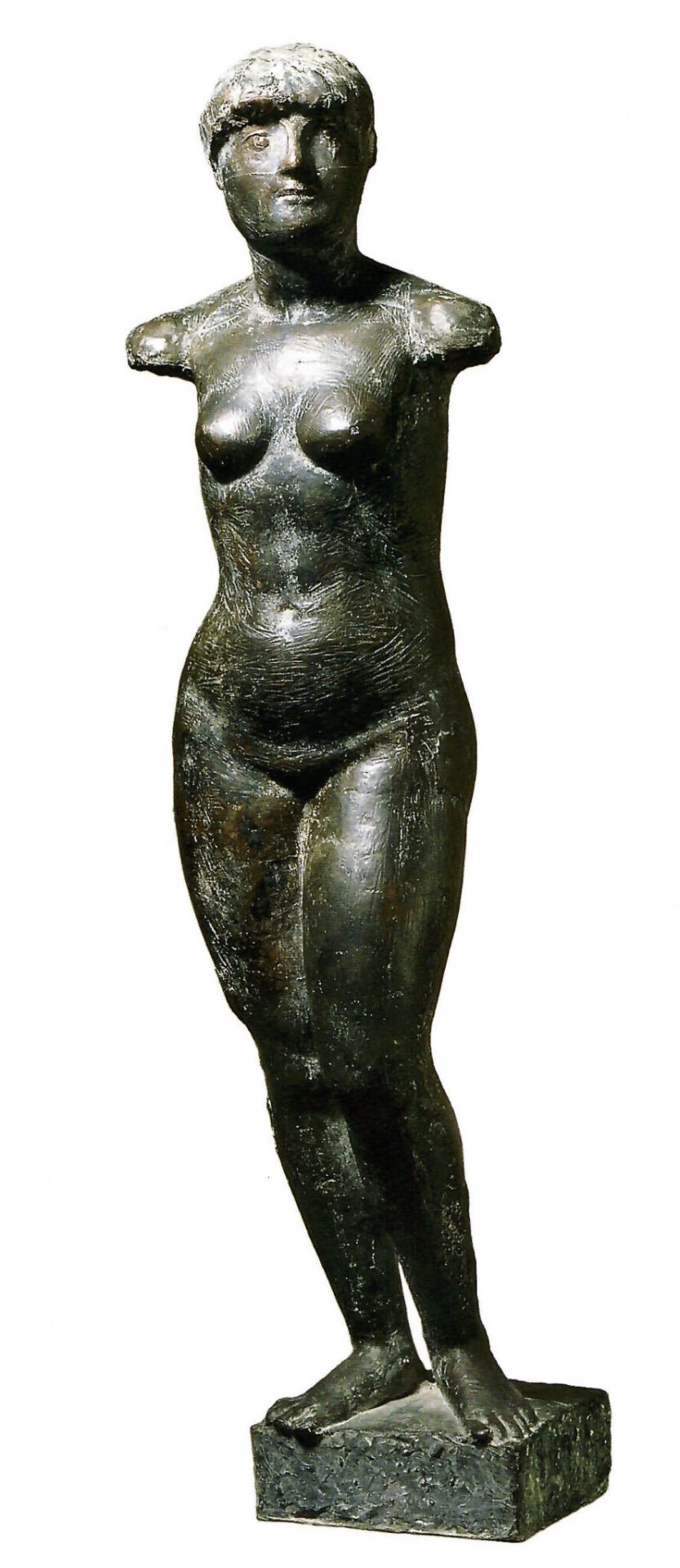
it is devoid of the realistic details, like jewelry or under-garments, present in other sculptures produced both before and after 1941.
As Gianmarco Russo writes in Marino Marini, Visual Passions. The Female Nudes and “Pomona” this female nude is “completely mutilated and headless, a pure and absolute abstract figure, resulting from an effort of geometric thinning…”
Within in the sequence of great bronzes on the same subject and from this same time period–that is, compared to the Giovinetta of 1938 and the Pomona of 1940–this headless and armless Pomona (1941) evidently abandons any physiognomic, psychologic or chronologic connotation, a culmination of Marini’s research of absolute and eternal form.
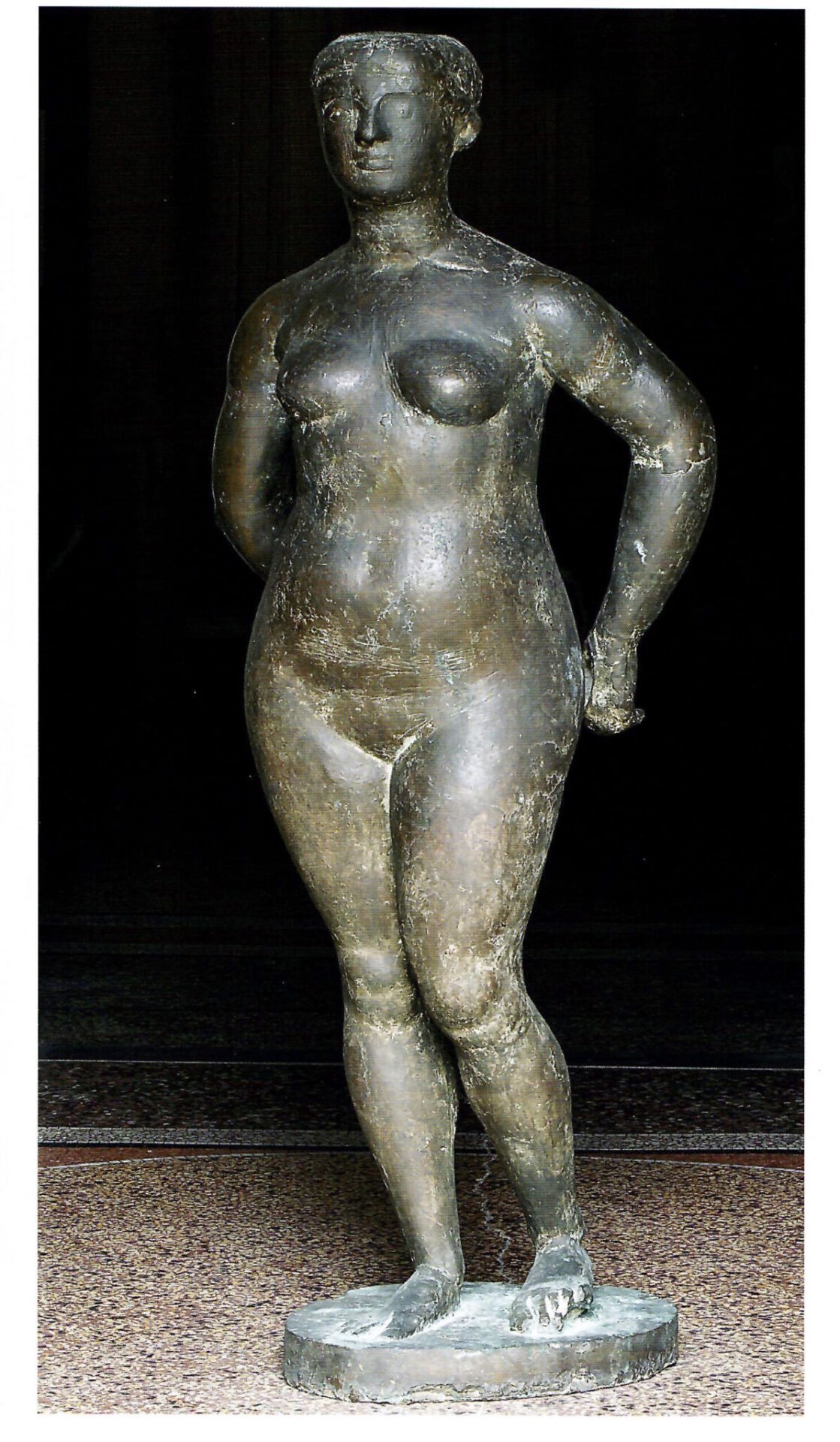
All the attention focuses on her torso and its volumes, conceived as an equilibrium of mighty masses. The woman’s abundant shapes are balanced with more dynamism compared to the two previous examples, which are definitely more static.
The sculpture is defined fully as an all-round piece, in which the lateral and posterior parts assume the same–if not more–importance than the frontal one.
The whole figure in fact becomes a rotating–even spiraling–
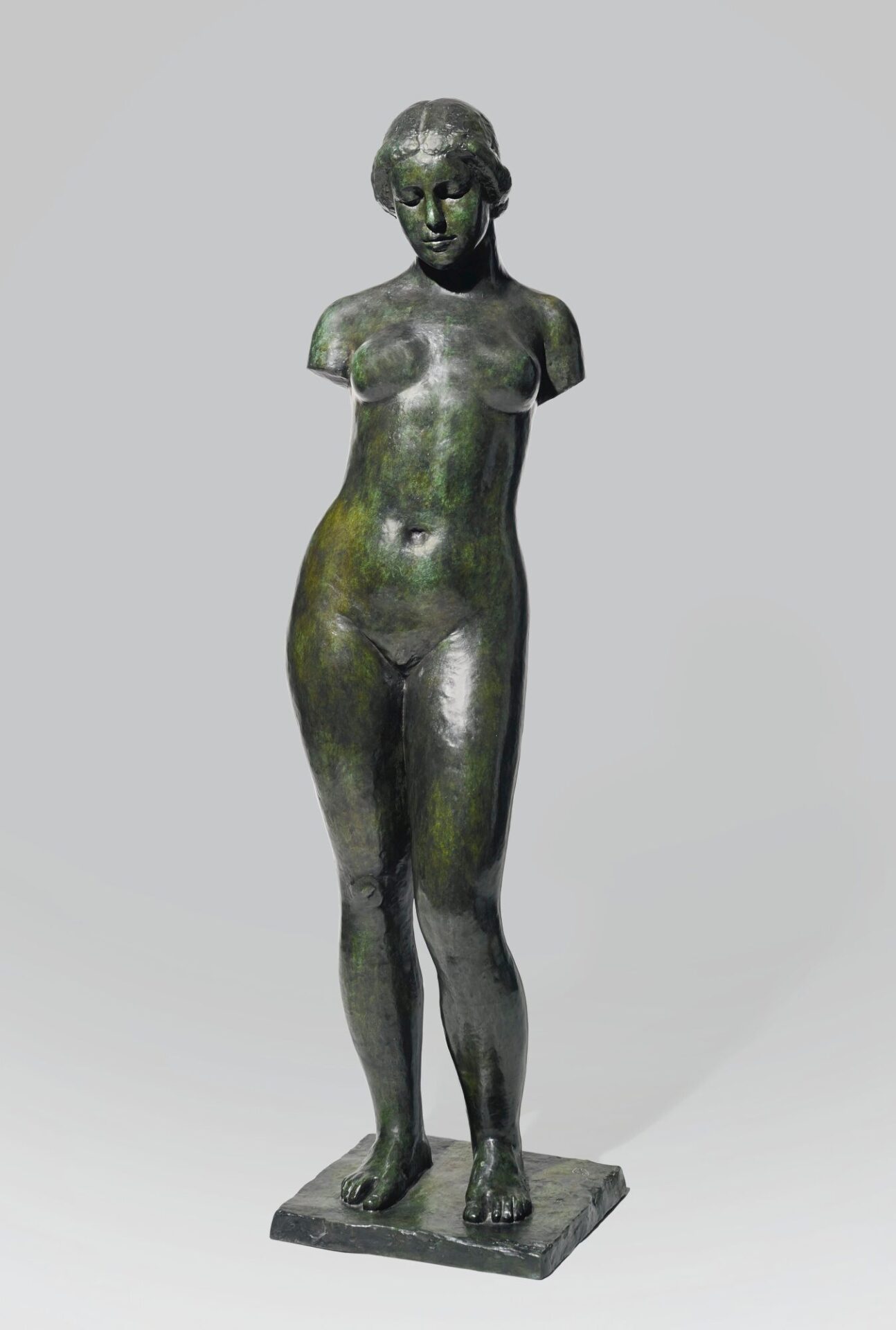
shape, which exceeds in an abstract sense the more affirmed examples from the same time period, like Aristide Maillol’s Harmonie (1940-44).
Alberto Giacometti, Petit Nu, 1964:
Born in SwitzerlandIn 1901, the son of an impressionist painter Giacometti grew up in his father’s studio. From 1919 he studied in Paris, where he joined André Breton’s surrealist movement from 1928 to 1935, as one of the current’s only sculptors. From 1947 he started to dedicate his attention even to painting and drawing. This piece, generously loaned by the Kunsthaus in Zurich, belongs to the Swiss artist’s last period of activity before his death in 1966–only two years after Petit Nu was completed. It is particularly interesting because typical of the artist’s poetics. The female figure is placed in the center of the canvas, in a rigidly frontal stance, and immobile in its nudity. Her legs are straight and aligned, her arms are long and touch on her hips. Only a very tormented graphic mark defines her body, and the interplay of sober white, black and grey tones makes up the whole painting. The woman is alone, in her fixedness, inside a linear
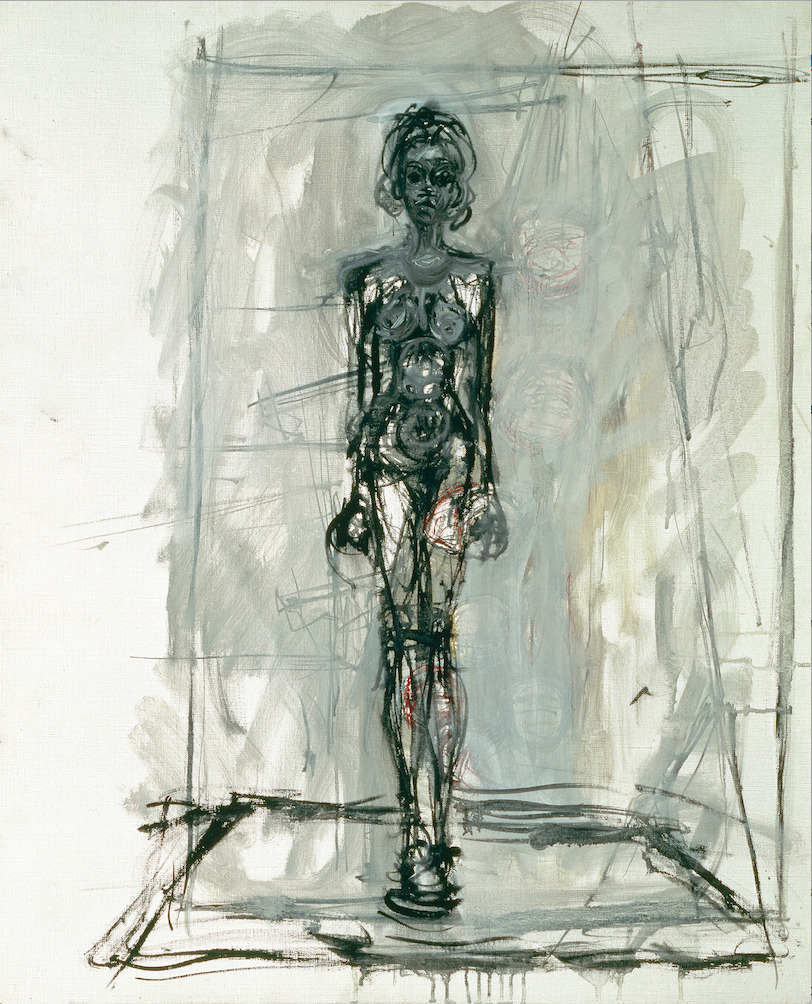
parallelepiped structure on a square base. This frame, which closes the space surrounding the figure like a cage with an opaque grey, isolates her and distances her from the spectator, almost as if she were behind a window or glass pane, exposed to our sight, but locked in another reality, with which any communication is impossible. Both in Switzerland, Marini and Giacometti met and frequented each other during the Second World War. Each artist practiced both sculpture and painting, and both treated the surfaces of their bronzes with much attention and detail, albeit in completely different ways. A comparison of the differences between these two contemporary (to each other) artists is interesting. Both were explicitly attracted to Etruscan art, but they had opposite temperaments: the Tuscan, Marini, was cheerful, warm, and ‘mediterranean,’ while the Swiss, Giacometti, was introverted and even tormented.
Piccola Figura, 1943-44: This work is one of several small bronze female nudes which inhabit CIMA’s current exhibition. It was realized in gesso in the most dramatic period of the Second World War, when Marino had moved his studio to Tenero, near Locarno, in Switzerland. All the castings in bronze of the pieces created in Switzerland were produced after the war, when the artist returned to Italy. Piccola Figura contains a quality which is deeply expressive, as Marini captures the small figure in an unusual pose: kneeling and leaning backwards, as if in sudden horror and fear.
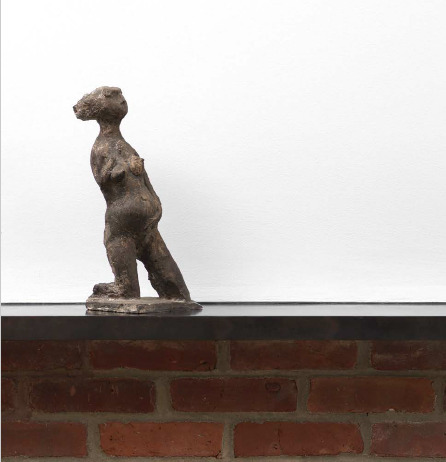
Bronze, 133⁄8 x 61⁄8 x 69⁄16 in.
(34 x 15.5 x 16.7 cm)
Fondazione Marino Marini – Pistoia
One arm, disproportionate in its very small size, rests on her breast, while the other sustains her pregnant abdomen. The face is roughly sketched, while her hair, rich in texture and suspended in the air, accentuates the dynamism of the whole figure. The surface is imperfect, as it is coated with scratches, developed by the artist himself during modelling. In this little bronze Marini abandons any classical reference, both in terms of pose and proportions, and in molding of the shapes. The result is a completely freeform invention, which tends to express in a concentrated and immediate way sentiments which in that time were lived as universal. Marini does not represent a particular woman, nor does he speak of a singular event or emotion, but he attempts to express in a small object the incredulous stupor of humanity in its entirety, while witnessing many unheard-of atrocities.
